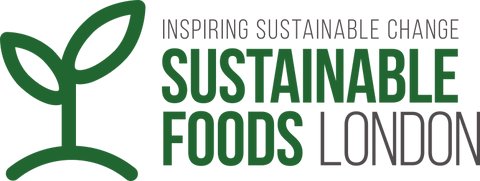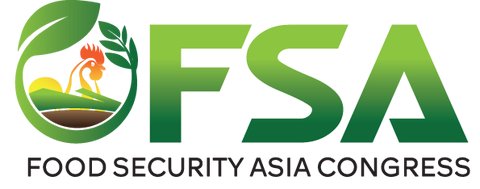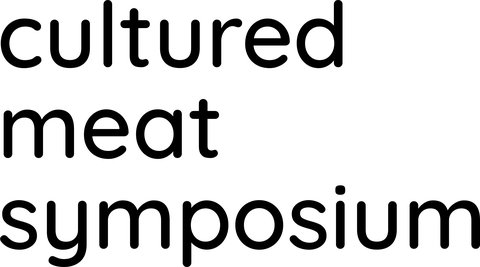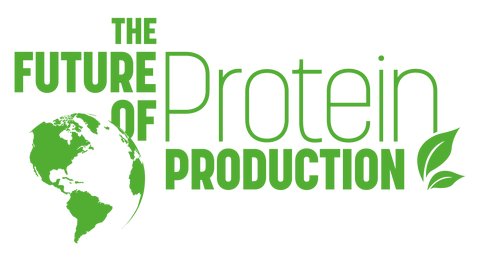Cellular Agriculture Finds Its True North
June 16, 2021 - 10 min read

Featured
Working in the field of cellular agriculture can sometimes feel like being privy to a big secret. Still a nascent industry, with all the accompanying growing pains — the scramble for funding, siloed research as companies race to market, and looming questions of scalability — cell ag professionals are nevertheless largely undaunted by the challenges. Being in on a secret can be emboldening, no doubt, but it’s not an unearned optimism when the field’s potential is this expansive.
This boldness is a trait cellular agriculture shares with startup culture so it’s no surprise the two can often be found happily co-existing. Across the globe though, the locations of these startups have historically been “spiky,” as urban theorist Richard Florida first noted in 2009 — clustered in a handful of global cities. For cellular agriculture, that’s meant early footholds in Silicon Valley, Israel, Singapore, and Tokyo, among others. But that may be changing.
“As a country, I think Canada should definitely lean into cellular agriculture,” says Dr. Evan Fraser, Professor of Geography at the University of Guelph and Director of the Arrell Food Institute, which conducts research that informs social, industrial, and governmental decisions necessary for building sustainable and resilient food systems. Fraser is currently leading a $100 million, 10-year research project into food technologies which will likely shape global food production in the coming years. “When we wrote the research proposal five years ago, cellular agriculture was not originally included as one of our focuses. Even recently, as an industry professional, it wasn’t on my radar, but suddenly about three years ago, I started to hear it talked about as this incredible development which would promote sustainability and unify protein.”
And indeed, Canada, seeing that same potential, is starting to lean into cellular agriculture. According to the Good Food Institute's State of the Industry Report, at the end of 2020, there were more than 70 companies worldwide working in the field — and a growing number of these are based in Canada.
The Current Landscape for Cellular Agriculture in Canada
This February, Y-Combinator-backed startup Future Fields announced the close of a US $2.2 million seed funding round. The Edmonton-based startup creates custom-culture media formulations that aim to mitigate between 55-95% of production costs currently associated with media. The funding will go toward scaling up operations — in particular, the production of their first commercial product, a proprietary FBS-free growth media called FGF2 protein. “FGF2 is exponentially cheaper than the majority of current media formulations. It varies by use case, but in general, it tends to be 1000 times cheaper,” says CEO Lejjy Gafour. Future Fields has sent out its first shipment of product to more than 20 cultivated protein companies for testing and is intent on ramping up production to fill their even more populated backlog.
Meanwhile, Montreal-based cell-cultured milk startup Opalia is working on engineering mammary cells that mimic the secretory abilities of in vivo cow cells. “Our goal is to sell whole milk and/or dairy ingredients, depending on the need, to existing food and ingredient companies. They will then be able to use it in their products [...] in lesser thought-about applications [...] such as soap and cookies. If these companies can market their products as 'vegan' or 'animal-free,' [...] there is an important value-added component,” says CEO Jennifer Côté. “We think that the dairy industry is not where it needs to be, environmentally. Personally, I don’t think that the majority of consumers would be willing to dramatically change their habits and adopt a vegetarian or vegan diet, and so we need to be able to produce the same foods that people know and love, just without the animal.”
“What many cultivated meat startups are working on are in the forms of processed or mechanically separated cultivated meat. These are great for introducing the technology but won't be the final products that most people are going to accept as cellular agriculture,” says McMaster Postdoctoral Researcher Alireza Shahin-Shamsabadi. “Consumers are also going to want to see full cuts of meat. We currently have these techniques in tissue engineering and we are working on adapting them for cultivated meat to create products that are completely scaffold-free and closer to what you would actually get from animals.”
Despite the strides these two startups have made, some of the main challenges they cite are related to policy. According to Gafour, “One of the biggest challenges is actually access to affordable workspace that is suitable for lab equipment for a new company.” Fraser confirmed that “zoning permits will also be an obstacle for production in that it is currently unclear whether they would be considered food or biotechnology facilities.” Côté says that one of Opalia’s priorities over the next three years will be getting regulatory approval for their products from Health Canada. “Currently, the definitions of terms such as “meat” and “dairy” do not include what we and other cellular agriculture companies are aiming to do.”
Canada Is Busy Marking Milestones
In March, national not-for-profit Cellular Agriculture Canada (CAC) held the first panel involving Canadian government officials to initiate the discussion of federal regulation of cellular agriculture products. “This was a significant milestone for Canada because it is extremely important that policymakers are made aware of what is going on. The earlier they are involved in the conversations, the better the policies will be,” says co-founder Ahmed Khan. “When CAC was co-founded, we were interested in unifying professionals in order to advocate for a fair and appropriate regulatory framework.”
Khan is also the Founder and Editor of CellAgri which, like Protein Report, is a site focused on sharing current developments in the cellular agriculture industry. “I first learned about cellular agriculture in 2017 [...] and I wanted to get involved as soon as possible,” Khan says. “However, I found it hard to get regular updates. I started CellAgri to be a homepage where readers can come to learn anything and everything.” Since then, CellAgri has published numerous investment reports, hosted global events, created an email miniseries, and published an ebook with the intention of expanding awareness regarding the field.
“In addition to advocating for fair regulations, CAC was intended to build a community where people could connect and continue to advance the field,'' says co-founder and previous Executive Director Yadira Tejeda-Saldana (who has since become the Research Collaborations Director at New Harvest). “I saw CAC as an organization that would bring together different stakeholders and draw them into the conversation through education and through events used as a platform to convey their thoughts.”
This past April, New Harvest announced a collaborative research project in partnership with Dr. Lenore Newman and Dr. Robert Newell at the University of the Fraser Valley Food and Agriculture Institute (FAI) exploring the potential of localized cellular agriculture systems in Canada. “Understandably and importantly, a lot of research has been dedicated to the technical aspect of the field,” says Dr. Lenore Newman, Director of the FAI and Associate Professor at the University of the Fraser Valley. “This project, which we will be starting in September, will instead be focused on the social and economic dimensions of how this technology will be rolled out in Canada.” In particular, one of the focuses of the study will be regarding food security.
“One of the prevalent concerns with cellular agriculture is that it will displace many existing jobs in agriculture which is a large national industry. Using the Fraser Valley as a case study, we want to see if this technology can be configured in such a way to supply more jobs and increase reliable access to nutritious food.”
Newman has previously conducted research exploring the implications of public policy within cellular agriculture. “As we go from bench science to scaling, policy becomes increasingly important. In looking at what kind of landscape we will want for this field in Canada and what we need in order to get there, it becomes apparent that one of the most significant gaps is within regulation.” Although public awareness is generally included in the realm of policy, Newman says that she does not anticipate public awareness being a significant obstacle. “The main driver for the public is cost and labor equity. If consumers have a better, cheaper option, why wouldn’t they choose it? […] And though animal and environmental protection tends to be a secondary factor in widespread consumer decisions, we do have a historic precedent of transitioning away from the systems that induce cruelty.”
How Canadian Cellular Agriculture Moves Forward
Despite these products’ forecasted success, cellular agriculture will still be viewed by some Canadian industries as an unwelcome disruptor but there’s still time to work proactively to shift public opinion.
“From a global perspective, many of the ways we produce livestock are unsustainable,” says Fraser. “But we also have to acknowledge that livestock is currently a very important aspect of the Canadian economy. It underpins the livelihoods of hundreds of millions of people around the world and the traditional consumption of game is integral to many Indigenous cultures. So while it looks like cell ag will provide a lot of sustainability benefits, we need to be cognizant of how we navigate these potential drawbacks. The last thing we want to do is alienate people.”
Fraser suggests that the main way we can prevent this is thoughtful implementation. “One of the main tenets of sustainable development is social sustainability. As an example, we don’t want cellular agriculture to be to food production what video streaming became to the movie rental business. We should be aiming for a more harmonious integration between livestock and all types of alternative proteins in which we work together to help people adapt.”
Fraser stresses that above all else, the emerging technology has shown that we need to redefine agriculture more broadly. “We typically think of food production as happening in the Prairies and the Maritimes. But, these disruptive food technologies that are coming online — not just cellular agriculture but also fermentation, vertical farming — are being deployed in urban and urban-adjacent areas. We need to reconsider how we understand and even define agri-food systems moving forward.”
In the future, Tejeda-Saldana says that she would like to see more public funding and support for pre-competitive research, particularly in interdisciplinary studies. “Cellular agriculture is a new interdisciplinary field, so funding that helps to drive early stage research forward could help create the knowledge and education necessary to advance the field,” she says. “The other gap is talent. As the industry keeps maturing, we need more people to fill in different roles — from research and policy to industry and more. At the moment, we don’t really have educational programs for training new people entering the field. This could look like undergraduate programs that focus on cellular agriculture or training courses that help existing professionals transition to this new industry.”
Shahin-Shamsabadi says that one of the hallmarks of a thriving national landscape would be a range of companies represented. “Not just companies working on engineering the final products, but also ones that focus on each step of the supply chain — cell lines, culture media, bioreactors, and even post-processing and distribution'.
Though perhaps not thought of as immediately as startup magnets like Silicon Valley, Singapore, or Israel, it would be a mistake to overlook the innovation culture of Canada. The outlook for cellular agriculture there is highly optimistic — in no small part due to a determination borne of being too often overlooked and underestimated.
“It’s very exciting,” says Côté of shifting consumer attitudes about cell-based products, adding what could also be a fitting coda for the industry’s potential within Canada: “This is feasible and this is the future.”
Updated February 15, 2021 to reflect BetterMilk's rebrand as Opalia.

















